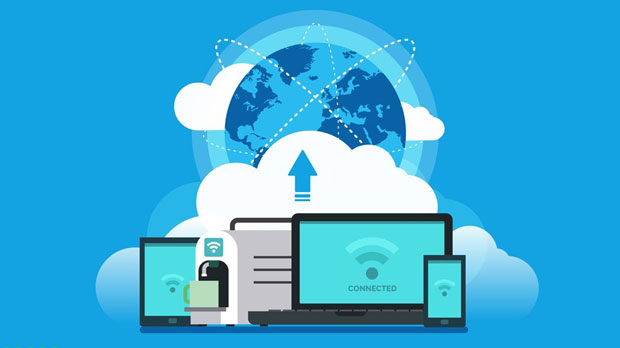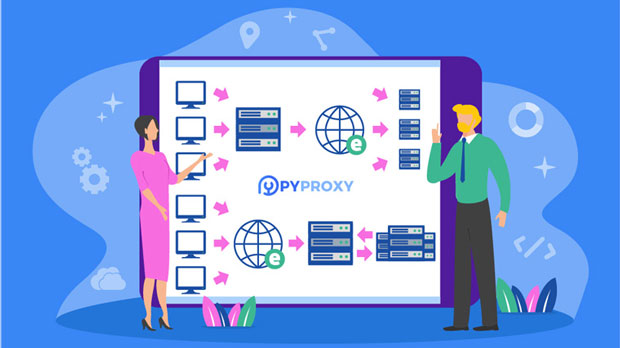When choosing a mobile proxy provider, one of the most crucial factors to consider is the quality of their IP pool. The IP pool, essentially the set of mobile IP addresses, determines the reliability, speed, and effectiveness of the proxy service. A high-quality IP pool ensures smooth operations for tasks such as web scraping, ad verification, and bypassing geo-blocks. Understanding how to evaluate the IP pool's quality can save you time, money, and frustration. This article will explore key criteria and evaluation methods that help you assess the effectiveness of a mobile proxy service's IP pool. From IP diversity to geo-location spread and performance consistency, the quality of the IP pool can significantly impact your online activities. 1. IP Diversity and QuantityOne of the first things to assess when evaluating a mobile proxy provider is the diversity and quantity of IPs in their pool. The larger the pool, the more options you have to avoid detection, which is especially important for tasks like web scraping or managing multiple accounts across platforms. Having a diverse range of IPs spread across different locations ensures that you can perform various tasks without triggering anti-bot defenses that may block repetitive traffic patterns.A high-quality IP pool should also have a large number of IP addresses. This quantity ensures that the provider can offer a wide range of options, minimizing the risk of IP bans. It's essential to verify that the IPs are consistently rotated to avoid detection, and that they come from legitimate mobile carriers, as some providers may use questionable sources that could impact the quality and stability of the service.2. Geographical Distribution of IPsAnother key factor in evaluating the quality of a mobile proxy provider's IP pool is the geographical distribution. A well-distributed IP pool allows you to select IP addresses from various regions or countries, which is important if you need to access content specific to a certain location. For example, if your goal is to access localized search results, bypass geo-restrictions, or perform ad verification across multiple regions, having access to IPs from diverse locations is essential.Providers with a global network of mobile IPs give you more flexibility and ensure that your activities appear natural to websites. You should assess whether the mobile proxy service offers a wide range of countries and cities, especially those critical to your operations.3. Speed and Latency of Mobile IPsThe speed and latency of mobile IPs in the pool are also crucial for ensuring smooth operations. Slow or high-latency IPs can severely hinder the performance of tasks like web scraping or ad verification, making it difficult to collect data efficiently or engage with web services. Low latency is particularly important for real-time tasks such as managing social media accounts, interacting with web applications, or bypassing CAPTCHAs.To evaluate this factor, you should test the response time and speed of the mobile IPs provided by the proxy service. High-quality mobile proxies should offer low latency and fast speeds comparable to residential IPs. Many proxy providers offer a trial period where you can assess the performance of their IP pool before committing to a long-term contract.4. Rotation and IP Renewal PoliciesThe rotation and renewal policies of IPs play a significant role in maintaining the effectiveness of a mobile proxy pool. IP rotation refers to the frequency at which the IP address changes during browsing or scraping sessions. Frequent IP rotation is beneficial in avoiding IP bans and maintaining anonymity. However, excessive rotation might lead to session interruptions, causing issues for tasks requiring persistent connections or maintaining logged-in sessions.Ideally, the mobile proxy provider should offer customizable rotation policies, allowing you to control the frequency of IP changes based on your specific needs. Providers with flexible and adjustable IP renewal policies ensure that you have consistent access to fresh, non-blacklisted IPs. It’s essential to verify whether the provider offers automatic IP switching, or if you are required to manually rotate the IPs.5. IP Reliability and StabilityReliability and stability are important factors in evaluating the overall quality of the mobile proxy provider’s IP pool. An unreliable IP pool can result in frequent disconnections, failures in accessing websites, or difficulties with consistent scraping and account management. When assessing reliability, consider the following aspects:- The uptime percentage of the proxy network- The consistency of connections and session persistence- The frequency of IP bans or interruptionsProviders with high-quality IP pools tend to offer stability guarantees, ensuring minimal downtime and maximum availability. Look for customer reviews and performance metrics that demonstrate the stability of the proxy service.6. Mobile Carrier and IP TypeThe type of mobile IPs in the pool is another crucial factor. Mobile proxy providers typically source their IPs from mobile carriers, such as 4G/5G networks. These IPs are typically harder to detect and block compared to traditional data center IPs. Since mobile IPs are associated with real mobile devices, they are less likely to be flagged by websites' anti-bot measures.It is important to check whether the provider uses legitimate mobile IPs sourced from reputable carriers. Some providers may offer data center IPs masked as mobile ones, which can be easily detected by advanced anti-bot systems. Verify the source of the IPs and ensure they come from real mobile devices to maintain a high level of anonymity and avoid detection.7. Cost and Value for MoneyFinally, the cost of the mobile proxy service should be evaluated in relation to the value provided. While cheap proxies may seem appealing, they often come with significant trade-offs in terms of IP quality, speed, and stability. A high-quality mobile proxy service that offers a large and diverse IP pool, good speed, low latency, and reliable service will typically come at a higher cost.However, investing in a high-quality mobile proxy service can save you time and effort in the long run by reducing issues such as IP bans, slow performance, and downtime. Consider the overall value of the service, including customer support, network reliability, and the ability to scale based on your needs.ConclusionEvaluating the quality of a mobile proxy provider’s IP pool is a multifaceted process that requires consideration of several key factors, including IP diversity, geographical distribution, speed, rotation policies, reliability, and the source of the IPs. A high-quality mobile proxy service ensures a smooth and efficient experience, whether you're using it for web scraping, ad verification, or managing multiple accounts. By carefully assessing these criteria, you can make an informed decision that suits your specific needs and ensures optimal performance for your online activities.
Aug 13, 2025


































































